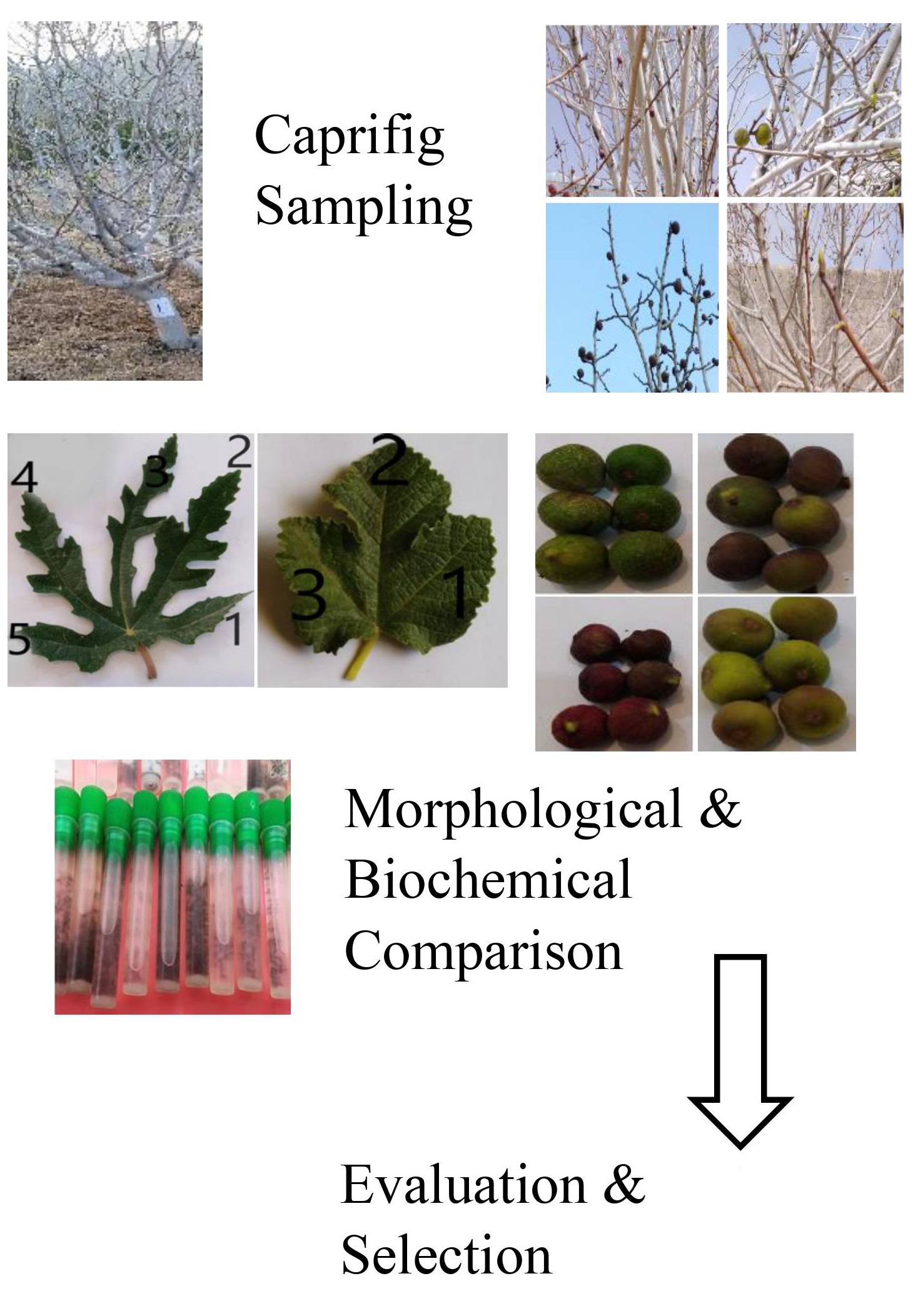Comparison of 18 Iranian caprifig cultivars based on some morphological and biochemical parameters

Published 2022-12-19
Keywords
- Antioxidants,
- characterization,
- essential elements,
- fig,
- screening
How to Cite
Abstract
Caprifig is a valuable candidate for fig breeding programs as it typically grows naturally under non-optimal conditions. The present study was carried out to evaluate the biochemical/morphological characteristics of 18 caprifig cultivars indigenous to the Darab region/southern Iran with 4 replications in a completely randomized block design. From each cultivar, healthy uniform leaf samples and spring fruits were taken and analyzed. Our results showed that 'Naneghasem' had the highest leaf α-tocopherol and polyphenol concentration. The highest leaf ascorbic acid concentration was obtained from the Gol Khengi cultivar (17.03 μg g-1 fresh weight). Also, the contents of chlorophyll, carotenoids, and anthocyanins were significantly different among the studied cultivars. Various cultivars had different absorption potentials for essential elements as macro and micronutrients concentration in the leaves were statistically different in various caprifigs; 'Naneghasem' had the highest Ca (4.46 mg g-1 dry weight) and Fe (67.71 mg kg-1 dry weight) concentration and the highest leaf K concentration (22.46 mg g-1 dry weight) was observed in 'Mahali Layzengan'. In conclusion, 'Naneghasem' was evaluated as a cultivar which seems to be more morphologically- and biochemically-distant from other studied caprifig varieties and probably more adaptable/tolerant to environmental conditions.





